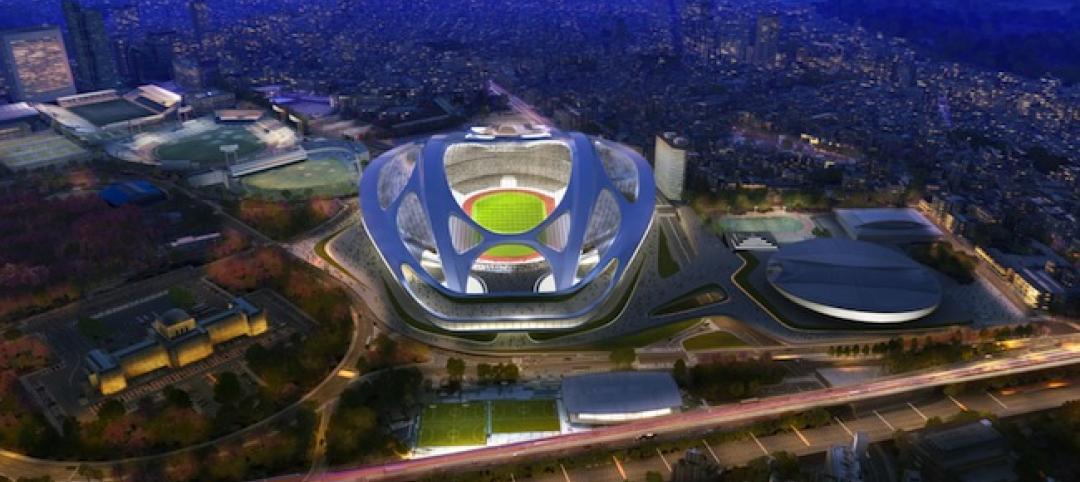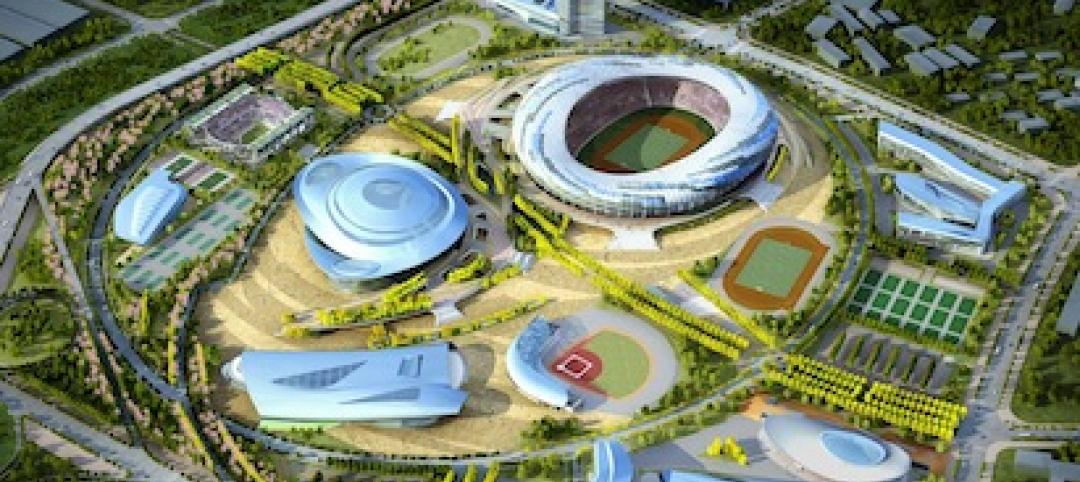The new home for the L.A. Rams and L.A. Chargers will not be opening as soon as was originally intended. The 70,000-seat stadium was initially scheduled to be ready in time for the 2019 NFL season, but thanks to a surfeit of rain the opening will be delayed until the start of the 2020 season, the Los Angeles Times reports.
The rainfall in the area didn’t just reach record amounts, but it also occurred at the worst possible time during the HKS-design stadium’s construction: the excavation phase.
At times, the stadium’s excavation site was filled with as much as 10 to 12 feet of standing water, which needed to be drained before work could resume. This caused the project, which is being built by Turner Construction and AECOM, to screech to a halt for two months.
The two months can’t be made up over the next two years, thus getting the project back on schedule, due to an already ambitious construction timetable and the increased workload associated with creating a stadium that will house two separate teams, according to the LA Times.
Due to the delay, the Rams will continue to play in the Coliseum for the 2019 season while the Chargers will have to play their home games at the StubHub Center for an extra season. While the Coliseum has a seating capacity of around 93,000, the StubHub center only offers 27,000 seats, but this will be expanded to 30,000 for Chargers games.
The stadium will be the focal point of a mixed-use entertainment district that will include a 300-room hotel, retail and office space, and a 6,000-seat performance venue.
Related Stories
| Jun 12, 2014
Austrian university develops 'inflatable' concrete dome method
Constructing a concrete dome is a costly process, but this may change soon. A team from the Vienna University of Technology has developed a method that allows concrete domes to form with the use of air and steel cables instead of expensive, timber supporting structures.
| Jun 11, 2014
Esri’s interactive guide to 2014 World Cup Stadiums
California-based Esri, a supplier of GIS software, created a nifty interactive map that gives viewers a satellite perspective of Brazil’s many new stadiums.
| Jun 4, 2014
Construction team named for Atlanta Braves ballpark
A joint venture between Barton Malow, Brasfield & Gorrie, Mortenson Construction, and New South Construction will build the Atlanta Braves ballpark, which is scheduled to open in early 2017. Check out the latest renderings of the plan.
| Jun 2, 2014
Parking structures group launches LEED-type program for parking garages
The Green Parking Council, an affiliate of the International Parking Institute, has launched the Green Garage Certification program, the parking industry equivalent of LEED certification.
| May 29, 2014
7 cost-effective ways to make U.S. infrastructure more resilient
Moving critical elements to higher ground and designing for longer lifespans are just some of the ways cities and governments can make infrastructure more resilient to natural disasters and climate change, writes Richard Cavallaro, President of Skanska USA Civil.
| May 22, 2014
Just two years after opening, $60 million high school stadium will close for repairs
The 18,000-seat Eagle Stadium in Allen, Texas, opened in 2012 to much fanfare. But cracks recently began to appear throughout the structure, causing to the school district to close the facility.
| May 20, 2014
Kinetic Architecture: New book explores innovations in active façades
The book, co-authored by Arup's Russell Fortmeyer, illustrates the various ways architects, consultants, and engineers approach energy and comfort by manipulating air, water, and light through the layers of passive and active building envelope systems.
| May 19, 2014
What can architects learn from nature’s 3.8 billion years of experience?
In a new report, HOK and Biomimicry 3.8 partnered to study how lessons from the temperate broadleaf forest biome, which houses many of the world’s largest population centers, can inform the design of the built environment.
| May 16, 2014
Toyo Ito leads petition to scrap Zaha Hadid's 2020 Olympic Stadium project
Ito and other Japanese architects cite excessive costs, massive size, and the project's potentially negative impact on surrounding public spaces as reasons for nixing Hadid's plan.
| May 13, 2014
First look: Nadel's $1.5 billion Dalian, China, Sports Center
In addition to five major sports venues, the Dalian Sports Center includes a 30-story, 440-room, 5-star Kempinski full-service hotel and conference center and a 40,500-square-meter athletes’ training facility and office building.

















